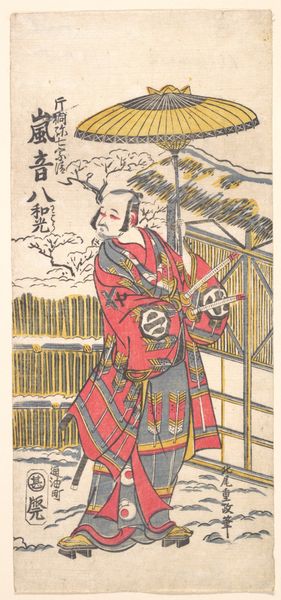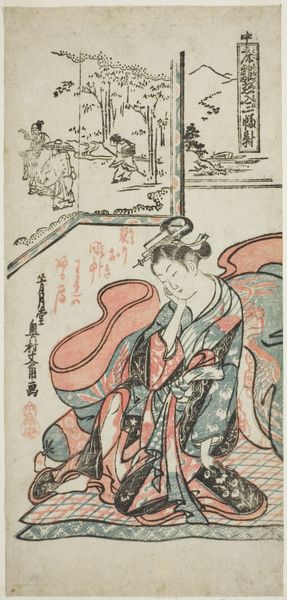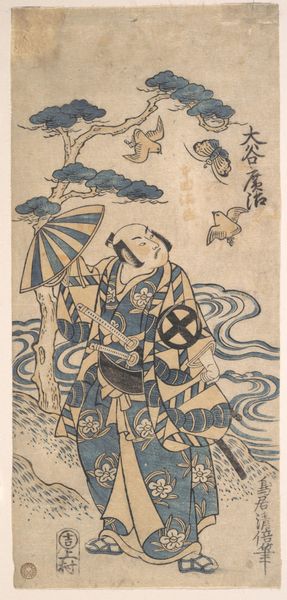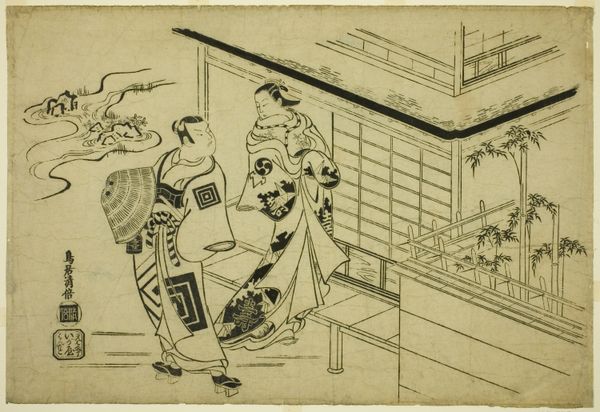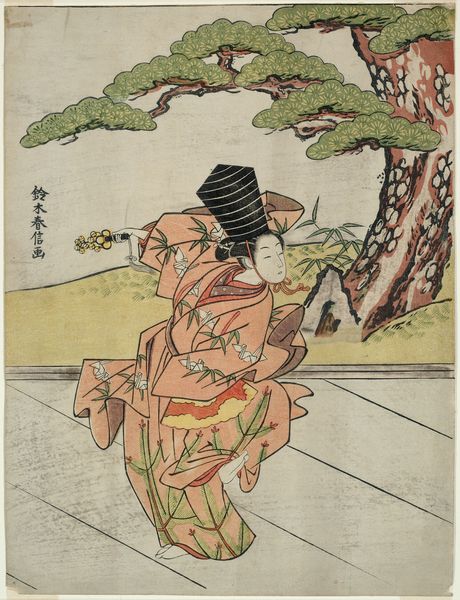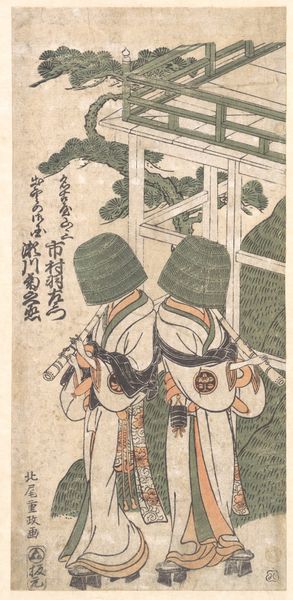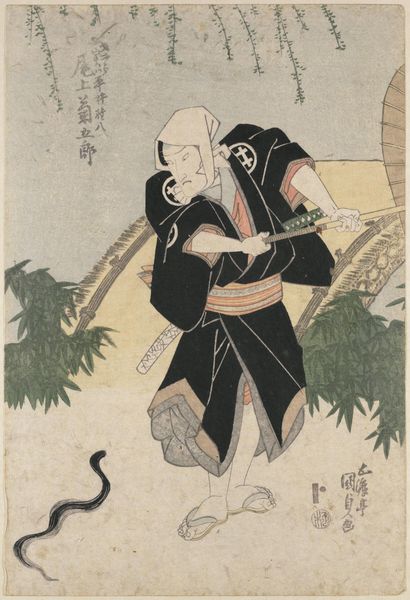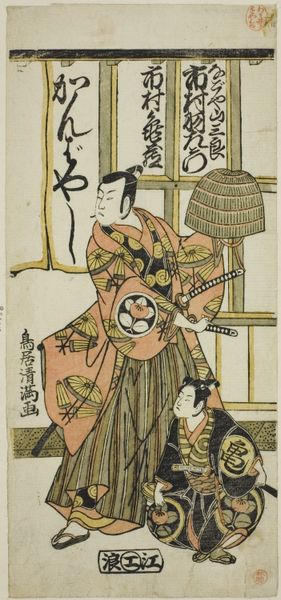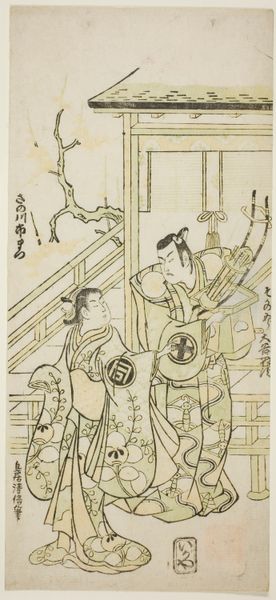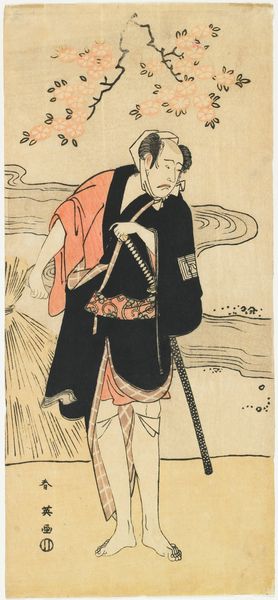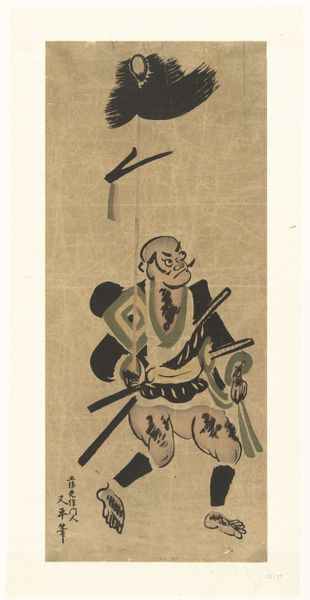
print, ink, woodblock-print
narrative-art
asian-art
ukiyo-e
figuration
ink
woodblock-print
line
genre-painting
Dimensions: 13 1/16 × 6 1/16 in.
Copyright: Public Domain
Editor: Here we have "A Priest Sweeping in the Snow" by Torii Kiyonobu II, created in 1731. It’s a woodblock print rendered in ink. I'm immediately struck by how much the composition relies on line and how that creates a real sense of depth despite the limited tonal range. What do you see in this piece, particularly in terms of its formal elements? Curator: Precisely. The dynamism is largely a consequence of the contrasting angles formed by the priest's robe, the broom, and the building's linear grid. Consider the calligraphic line quality itself: its varying thickness animates the depicted forms. Do you observe how the lines defining the figure's robe possess a certain boldness, while the building’s lines appear much finer, more restrained? Editor: Yes, that contrast makes the priest appear more weighty, grounded in the ephemeral snow, whereas the building seems to recede, becoming almost skeletal. Could you elaborate on the spatial dynamics created by these lines and forms? Curator: The artist employs line to define the figure and objects but refrains from shading, allowing negative space, or "ma," to delineate forms. Note how the blank expanse surrounding the priest is as crucial as the depicted figure in conveying the sensation of a snowy environment. It forces the viewer's gaze upon the concentrated forms within the frame. This intentional emptiness serves as a crucial design element, underscoring principles found across various examples of *ukiyo-e* artwork. Editor: I hadn't fully appreciated the intentional use of empty space! It’s amazing how much the absence of detail contributes to the overall effect of the composition and conveys this sense of the cold. Curator: Indeed. It reveals the sophisticated manipulation of form inherent within this seemingly simple composition. We begin to see the piece is rich with purpose once we consider the individual characteristics of the components. Editor: Thanks, that’s definitely given me a new perspective for examining prints in general.
Comments
No comments
Be the first to comment and join the conversation on the ultimate creative platform.
